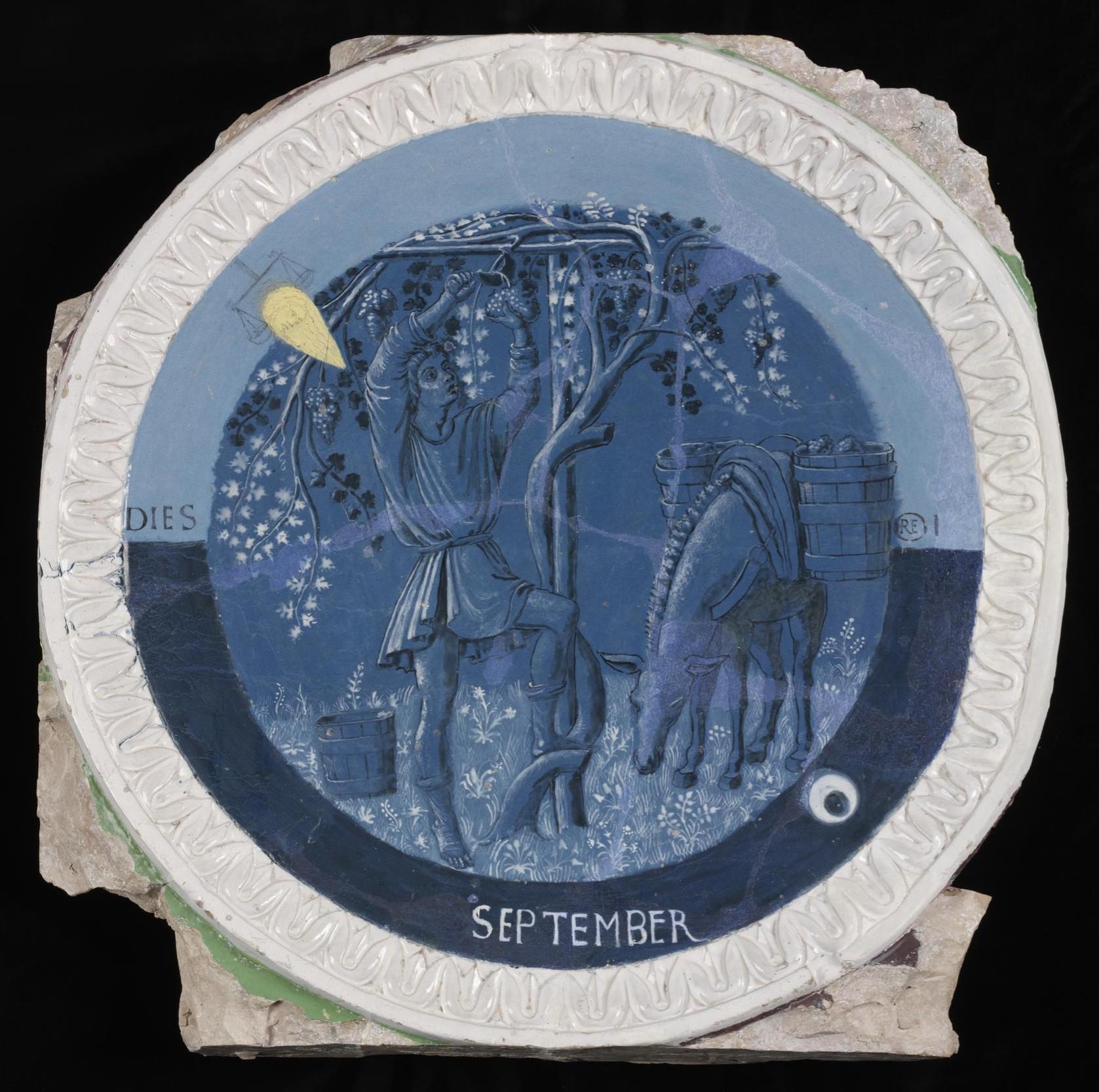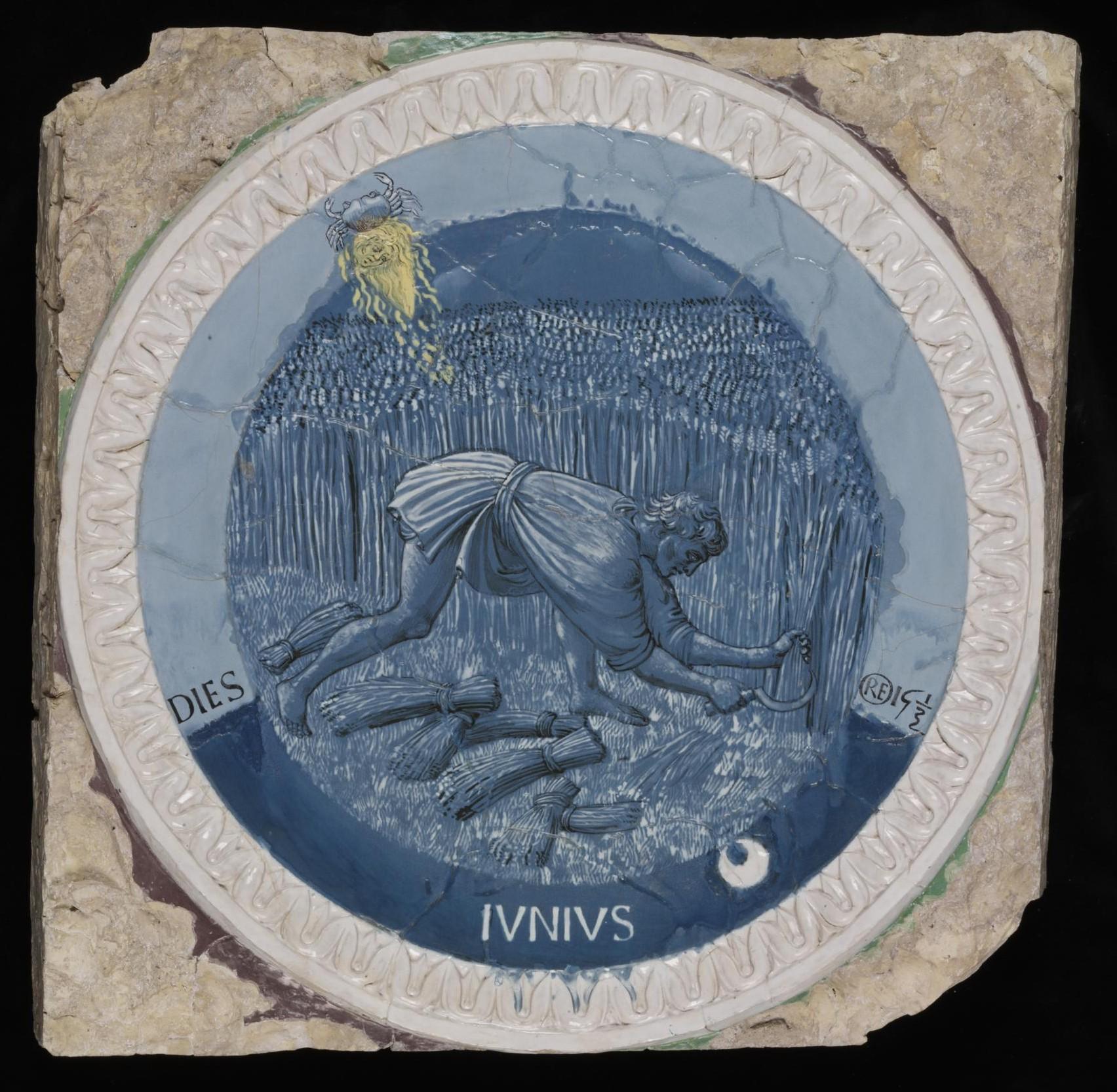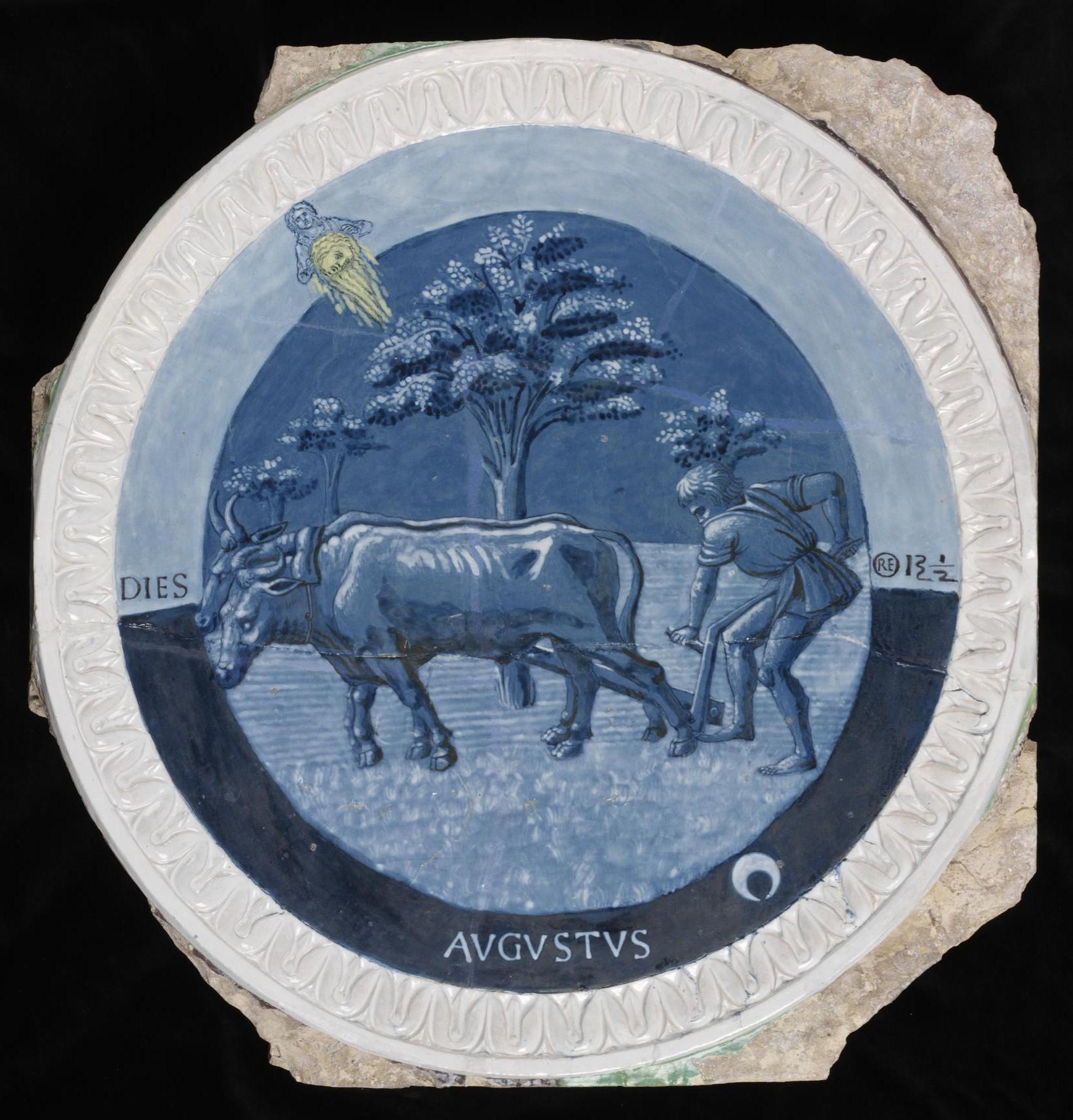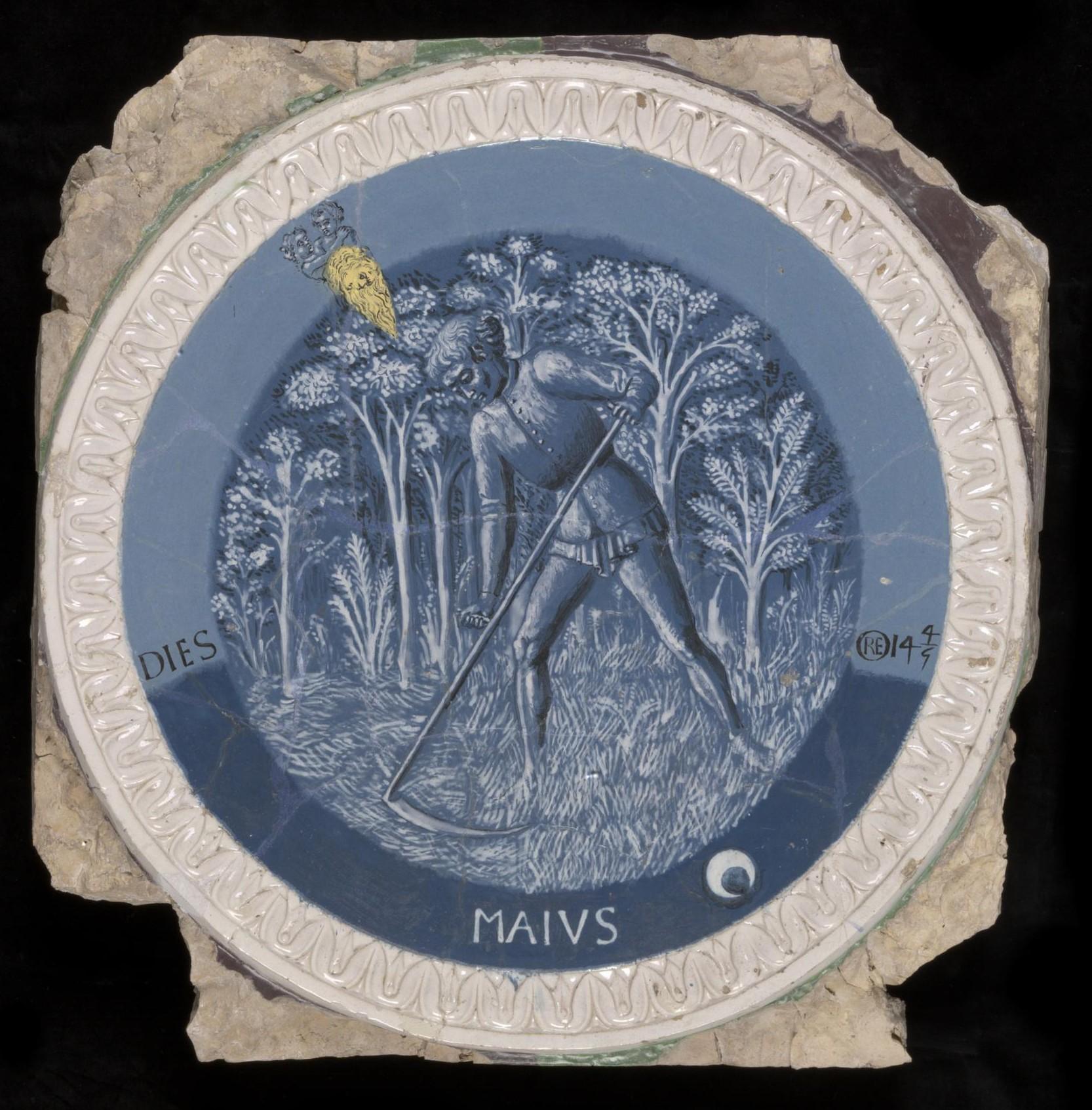In Portrait of a Young Woman, Botticelli meticulously painted the copious amount of pearls braided into the woman’s hair and bodice. Because pearls symbolized feminine purity, it was fashionable for women to wear pearls dripping from their hair and also embroidered onto their clothes. Additionally, the young woman wears another jewel that helps to identify her as Simonetta Vespucci. The cameo pendant on her neck is a copy of a famous Roman gem in Lorenzo de Medici’s collection, known as the “Seal of Nero,” as it was thought to have been the Emperor’s seal. Simonetta Vespucci was not only the inspiration of many of Botticelli's Venus figures, but also the lover of Lorenzo’s brother, Giuliano de’ Medici. The inclusion of the Medici gem suggests that the artist or patron probably wanted to associate the woman with the Medici, while giving her a classical aura.
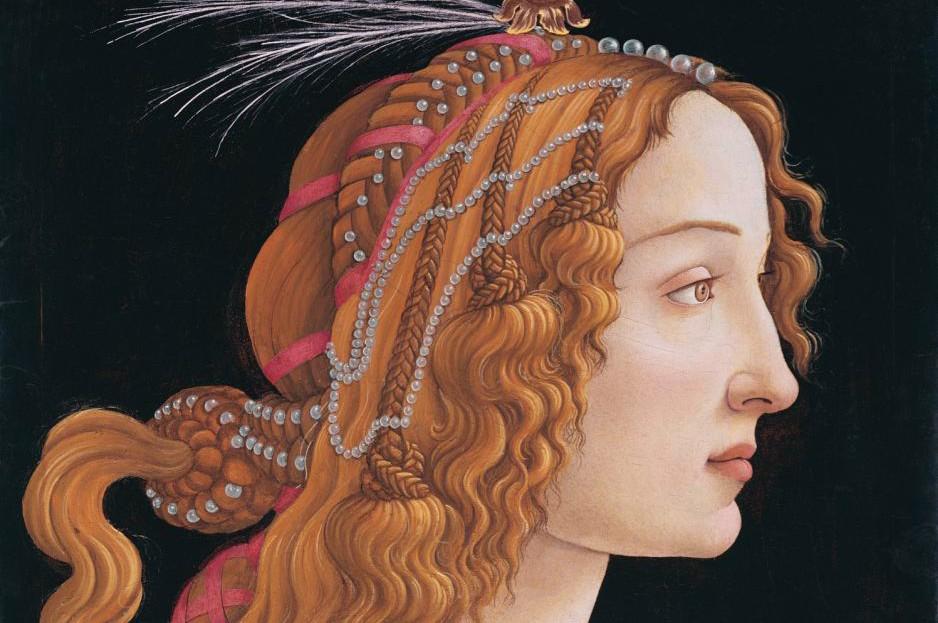
In the second installment in our series on jewelry’s place in art history, we’re exploring jewelry collecting in the Renaissance, a time when jewels were considered as valuable to possess and display as painting and sculpture. Indeed, Renaissance goldsmiths were revered as much as painters, sculptors, and architects. You’ll be surprised to learn, for example, that the legendary Florentine painter Sandro Botticelli first apprenticed as a goldsmith: although he never worked as a professional jeweler, this training translated well into his detailed paintings and their fine rendition of jewelry.

Sandro Botticelli (1445–1510), Portrait of a Young Woman (Portrait of Simonetta Vespucci as Nymph), between 1480 and 1485. Tempera on wood.
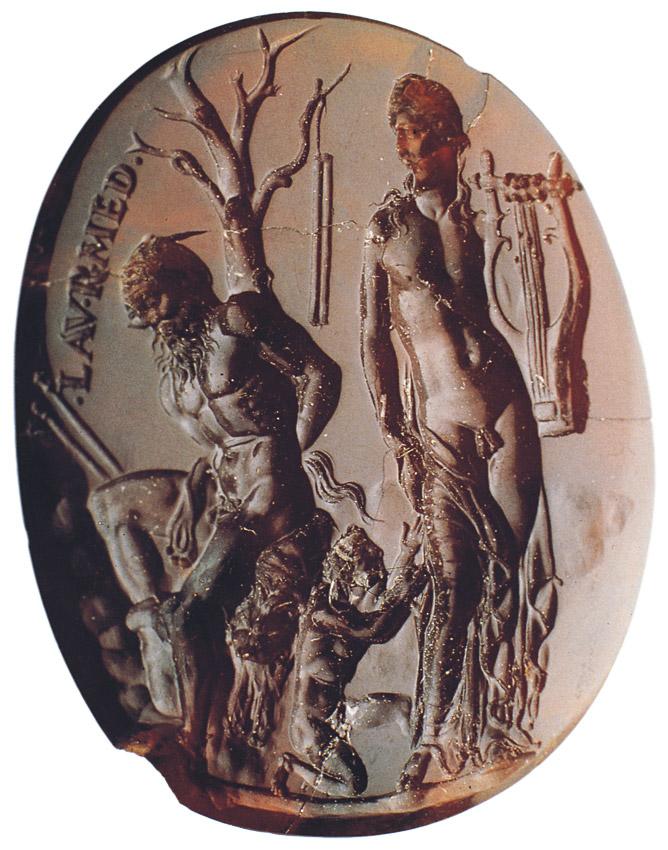
Apollo and Marsyas, Roman imperial period. Intaglio in carnelian.
Because of the Renaissance's fascination with all things classical, cameos, gemstones carved in relief, and intaglios, engraved stone, became very popular, not only for their intrinsic value as gems, but also for their depiction of mythological and allegorical figures. In this case, the gem shows the musical challenge between the god Apollo and the satyr Marsyas, with LAVR.MED, Lorenzo de Medici’s Latin name inscribed too. As one of the most important patrons of the arts and gemstone collector of the Renaissance, Lorenzo added his name to possess the classical piece both physically and intellectually.
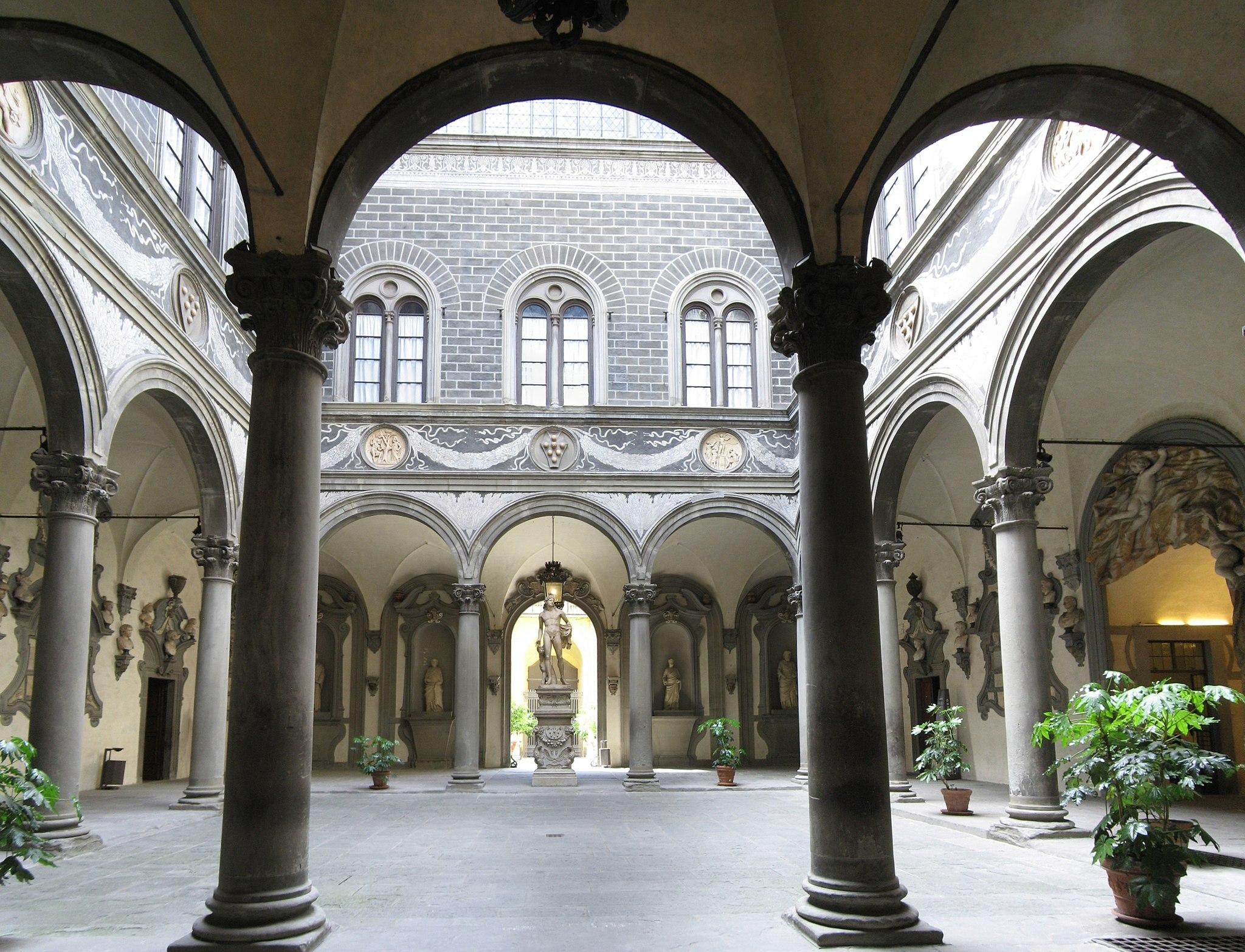
Palazzo Medici courtyard on Via Larga, Florence, designed by Michelozzo di Bartolomeo, c. 1445.
Piero de' Medici and his son Lorenzo brought together their fascinating collections in a small study, or studiolo, on the first floor of the Palazzo Medici in Florence. The intimate but rich room was only ten feet wide and sixteen feet long, accessible through a chamber and antechamber. Although the studiolo was destroyed in the reconstruction of the palace in the 1650s, the ceiling’s twelve roundels in tin-glazed terracotta, illustrating the Allegories of the Months by Luca della Robbia, have survived at the Victoria and Albert Museum in London. The interior was also described by his contemporaries Giorgio Vasari and the architect and sculptor Filarete, who said “the floor as well as the ceiling [was] enameled with most worthy figures, so that whoever enters is filled with admiration.”
Only a few refined and cultured friends were admitted to the space, which was so crowded and small in size that even a party of three had to admire the treasures in a different room. In a letter to his Ducal master Ercole I d’Este, Antonio de Montecatini described some of the treasures apropos of the visit of Cardinal Giovanni of Aragon to Lorenzo de Medici in August 1480: “... he examined the said studio with copious quantities of books, all worthy, written with a pen—a stupendous thing. Then we returned to the little loggia opening off the camera. And there on the table, he had brought his jewels (out of the studio)… vases, cups, hard stone coffers mounted with gold, of various stones, jasper and others... Then he had brought two large bowls full of ancient coins, one of gold coins and the other full of silver, then a little case with many jewels, rings and engraved stones.”

Attributed to the workshop of Jan van Eyck, St. Jerome in his study, c. 1435. Oil on linen paper on oak panel.
In the humanist culture of the Renaissance, Medici’s studiolo was “the intellectual and material core of the palace,” where jewels were viewed and studied alongside books and other intellectual objects. Lacking an image of the study itself, this oil on panel by Jan van Eyck’s workshop not only captures the studious environment but was also described in Lorenzo’s inventory.
The limited space, in part due to objects inherited from his father, did not discourage Lorenzo from assembling a personal collection related to his own intellectual pursuits. As desirable collectibles, revivals of antiquity, and even as markers of allegiance and affiliation, as seen in Botticelli’s portrait, gemstones and jewels played a vital role in the arts, society and culture of the Renaissance.




